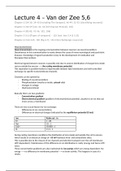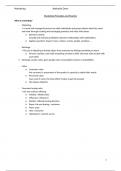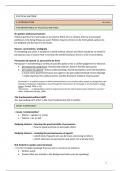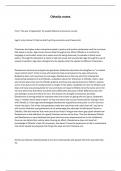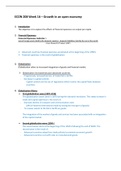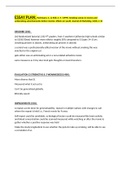College aantekeningen
Lecture 5&6 Van der Zee
Learning objectives - Why knowledge of signal transduction is important - principles of the resting membrane potential - principles of action potentials - action potentials in aged neurons - mode of action of lidocaine and cocaine - gap junctions: shape and function - the chemical synapse ...
[Meer zien]
